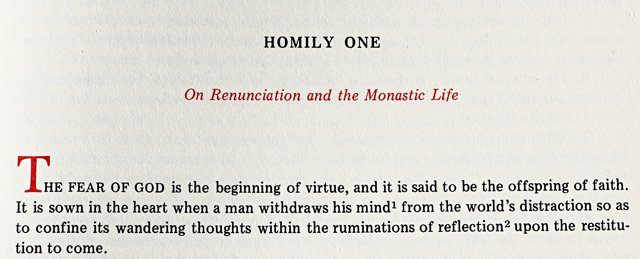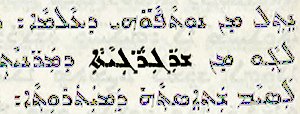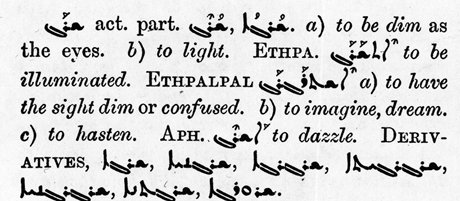 | ||
 |  | |||


Holy Transfiguration Monastery Publications, Inside our Books and the Sources behind them, is a companion site to www.thehtm.org.
Copyright © 2012, Holy Transfiguration Monastery, Brookline, MA. All rights reserved. Home Page | About • Contact | Terms of Use
Textual Questions: 1. Homily One

Note
The following discussion is not required for an understanding of the Ascetical Homilies. It provides three examples of the textual questions that are usually resolved behind the scenes in order to spare the reader. Readers who do not wish to be spared may here browse some of the minutiae that translators contend with, and they will also find more illustrations of the manuscripts and printed editions used for our translation than were shown in Sources, and more illustrations of the differences between them.
A Faulty Footnote
To give an example of a footnote that needlessly detained the reader for a trivial variant while giving an explanation that was both misleading and incomplete, one need look no farther than the second footnote in the first paragraph of Homily One.
Shown at left, footnote 2 explains that the translation “ruminations of reflection” renders the Greek text but with a grammatical change that follows the Syriac.
1. “Ruminations” is not a normal translation of the Greek “meteorismo,” which means literally a “lifting up,” but idiomatically most often means “distraction.”
2. The Syriac word that the Greek translators have rendered “meteorismo” or “distraction” poses a challenge. In most cases St. Isaac uses it to mean a phantasy of the mind or even a hallucination, yet in this in case it is that in which a man ought to confine his thoughts in order to reflect on the age to come. This is a perfect example of a point made at #1 here, that St. Isaac’s use of words is highly contextual.
Shown at far left is the word in Bedjan’s printed text, which represents the Eastern Syriac, and to the right of it, the same word in Vatican Syriac 124, which represents the Western, showing no variant reading in the Syriac.
Beneath them are two entries from Payne Smith’s Compendious Syriac Dictionary. The first shows what the Syriac word typically means (note that it usually means hallucination, illusion in the plural, which is how it occurs in St. Isaac’s text here); the second shows the range of meaning associated with the verb from which it is derived, which includes the giving of light, or illumination. Mary Hansbury is doubtless right in rendering it illuminations in her translation of this homily.
It seems that the Greek translators, faced with a word that usually means (and is usually translated by them) “phantasies,” rendered it as “distraction,” but were then forced to oppose it to the “reflection upon the restitution to come.”
To have explained all the above in the footnote (and more complications than this could be mentioned) would have set a clog on the reader before the first Homily barely began, and the net difference in ultimate meaning between Greek and Syriac would not have justified it.
Bedjan’s Syriac Printed text, Homily 1
Vatican Syriac 124, Homily 1
The above image from Vatican Syriac 124 is © Biblioteca Apostolica Vaticana, and is used by permission of Biblioteca Apostolica Vaticana, with all rights reserved.

